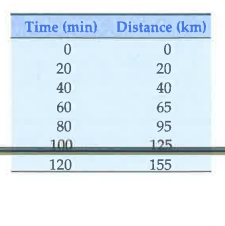A body moves speed V1 for distance L and then with speed V2 for distance 2L. The average speed for the motion is
V1+V22
3V1V2V1+2V2
3V1V22V1+V2
3V1V2V1+V2
The correct Answer is:C
To find the average speed of a body moving at different speeds over different distances, we can follow these steps:
Step 1: Identify the distances and speeds
The body moves:
- Distance L at speed V1
- Distance 2L at speed V2
Step 2: Calculate the total distance
The total distance D traveled by the body is the sum of the two distances:
D=L+2L=3L
Step 3: Calculate the time taken for each segment
Using the formula for time, t=dv:
- For the first segment (distance L at speed V1):
T1=LV1
- For the second segment (distance 2L at speed V2):
T2=2LV2
Step 4: Calculate the total time
The total time T taken for the entire journey is the sum of the times for both segments:
T=T1+T2=LV1+2LV2
Step 5: Find a common denominator for the total time
To combine the fractions, we can find a common denominator:
T=LV2V1V2+2LV1V1V2=LV2+2LV1V1V2=L(V2+2V1)V1V2
Step 6: Calculate the average speed
The average speed Vavg is defined as the total distance divided by the total time:
Vavg=DT=3LL(V2+2V1)V1V2=3L⋅V1V2L(V2+2V1)
The L cancels out:
Vavg=3V1V2V2+2V1
Final Answer
The average speed for the motion is:
Vavg=3V1V2V2+2V1
The body moves:
- Distance L at speed V1
- Distance 2L at speed V2
The total distance D traveled by the body is the sum of the two distances:
D=L+2L=3L
Using the formula for time, t=dv:
- For the first segment (distance L at speed V1):
T1=LV1
- For the second segment (distance 2L at speed V2):
T2=2LV2
The total time T taken for the entire journey is the sum of the times for both segments:
T=T1+T2=LV1+2LV2
To combine the fractions, we can find a common denominator:
T=LV2V1V2+2LV1V1V2=LV2+2LV1V1V2=L(V2+2V1)V1V2
The average speed Vavg is defined as the total distance divided by the total time:
Vavg=DT=3LL(V2+2V1)V1V2=3L⋅V1V2L(V2+2V1)
The L cancels out:
Vavg=3V1V2V2+2V1
The average speed for the motion is:
Vavg=3V1V2V2+2V1
Topper's Solved these Questions
Similar Questions
A particle travels along a straight line. It covers halg the distance with a speed (v). The remaining part of the distance was covere with speed v1 for half the time and with speed v2 for the other half the time . Find the average speed of the particle over the entire motion.
View Solution09A body moving in a straight line covers half the distance with a speed V the remaining part of the distance was covered with a speed V for half the time and with a speed V for the other half of the time.What is the average speed of the body?
View Solution
Knowledge Check
An object moves the first half of the total distance with a speed of 2 m s−1. If the average speed of the body is 3 m s−1, the speed of the body when it trav elled the remaining distance is ________ m s−1
A3B6C4D2An object moves the first half of the total distance with a speed of 2 m s−1 . If the average of the body is 3ms−1 , the speed of the body when it travelles the remaining distance is _______ ms−1
A3B6C4D2An object moves the first half of the total distance with a speed of 2 m s−1 . If the average of the body is 3ms−1 , the speed of the body when it travelles the remaining distance is _______ ms−1
A3B6C4D2
If a paritcle travels distance S2 and s-2withspeeds v_1and vec _2 in the same direction, then average speed of the particle is …………………………………. .
View SolutionA bus moves at a uniform speedv1for some time and then with a uniform speed v2. The distance-time table is given below. Plot the corresponding distance-time graph and answer the following questions .

What is the average speed for the complete journey ?
View SolutionA bus moves at a uniform speedv1for some time and then with a uniform speed v2. The distance-time table is given below. Plot the corresponding distance-time graph and answer the following questions .

Find the values of v1 and v2.
View SolutionA man travels two-third part of his total distance with speed v1 and rest one-third part with speed v2. Find out the average speed of the man?
View SolutionA bus moves at a uniform speedv1for some time and then with a uniform speed v2. The distance-time table is given below. Plot the corresponding distance-time graph and answer the following questions .

When did the bus change its speed?
View Solution